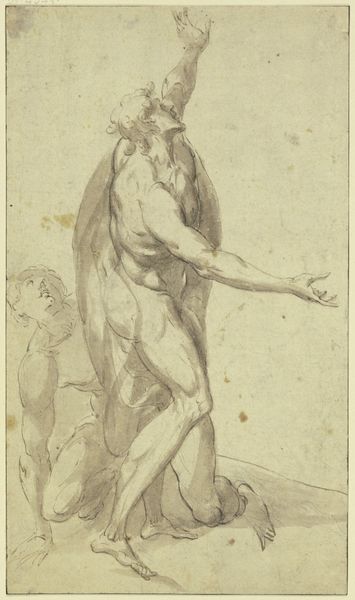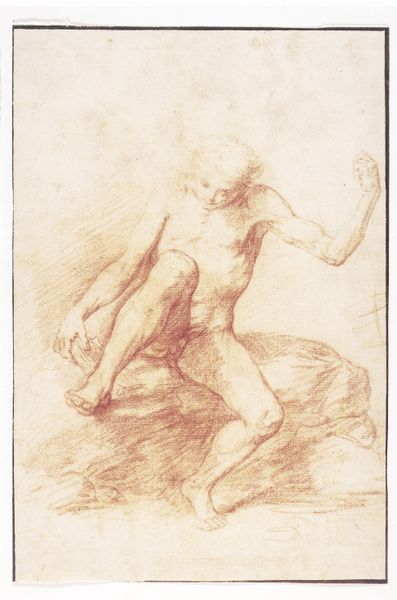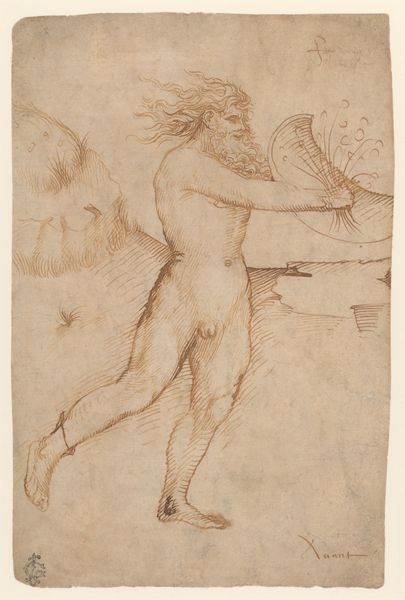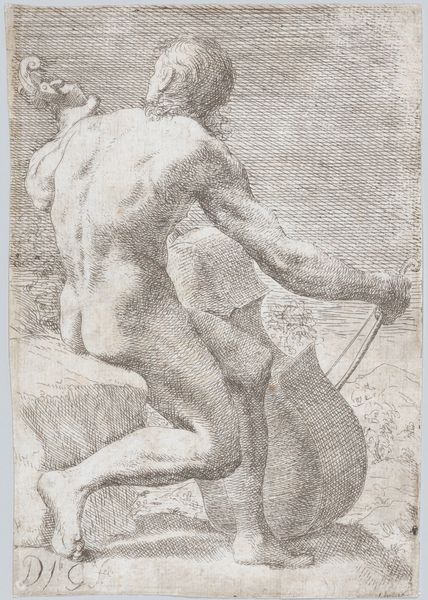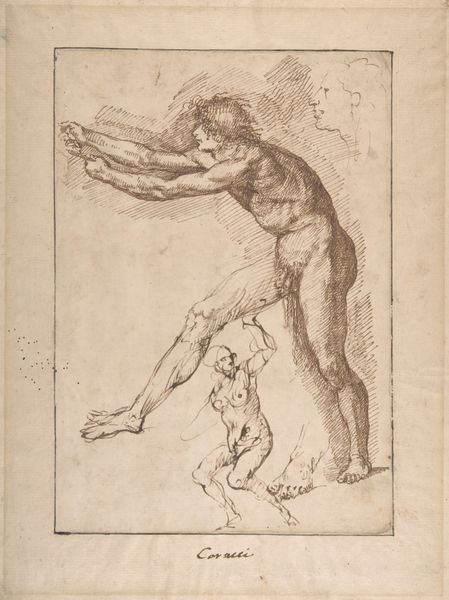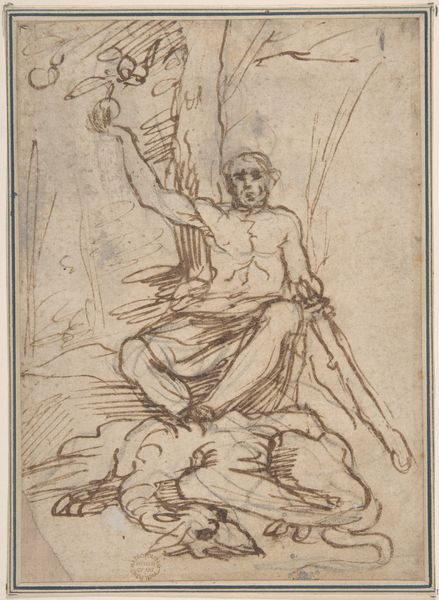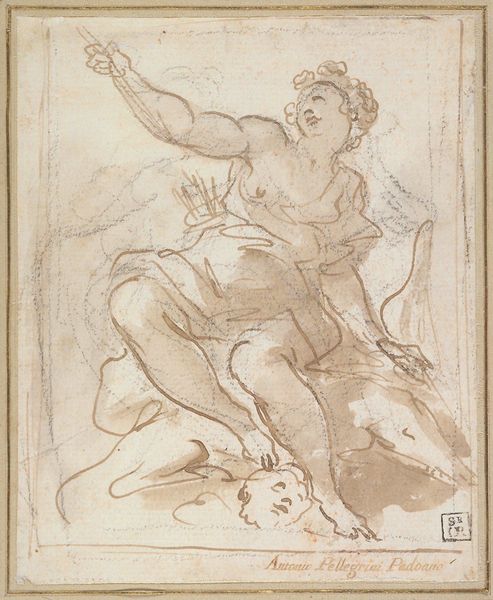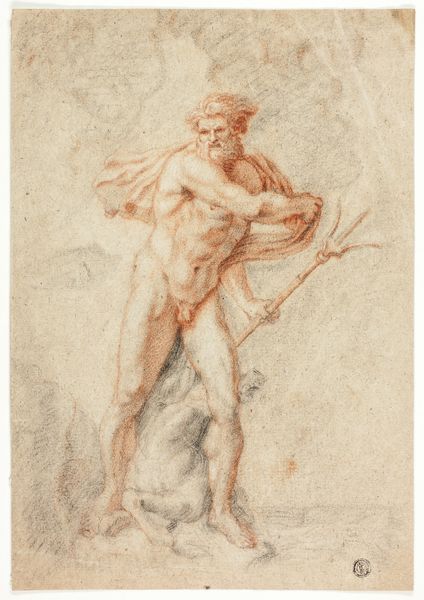
drawing, pencil
#
drawing
#
high-renaissance
#
landscape
#
figuration
#
pencil
Copyright: Public Domain
This is Raphael's "Study of a Warrior on Horseback" at the Städel Museum, a drawing, that presents a captivating study in form and motion. Rendered in chalk, the composition is dominated by the muscular figure of a warrior, viewed from behind, dynamically posed atop a horse. Raphael masterfully employs line and shading to delineate the warrior's physique, accentuating the tension and power in his stance. The fluid lines of the drawing emphasize the body's articulation, capturing a sense of latent energy and potential movement. The inclusion of partial armor sketches further underscores the work's focus on the human form within the context of military readiness. The study exemplifies Raphael's engagement with classical ideals of beauty and the heroic figure, filtered through his distinctive Renaissance sensibility. The interplay between line, form, and implied movement reflects not only Raphael's technical prowess, but also the broader humanist concerns of the era. It allows us to reflect upon the artistic process, where the artist grapples with form, movement, and expression.
Comments
stadelmuseum about 2 years ago
⋮
Raphael’s fresco of the Meeting of Pope Leo the Great and Attila in the Stanza d’Eliodoro in the Vatican recounts how the king of the Huns is forced to retreat by the power of the Church and Christendom. An early study ultimately not used for the fresco, the fine silverpoint drawing with white heightening from the Städel collection investigates the heathen soldiers’ abrupt standstill and about-face. The figure is shown nude, his clothing merely alluded to; at the bottom right his torso is repeated, now wearing a cuirass. The horse is effectively described with no more than a few lines.
Join the conversation
Join millions of artists and users on Artera today and experience the ultimate creative platform.
